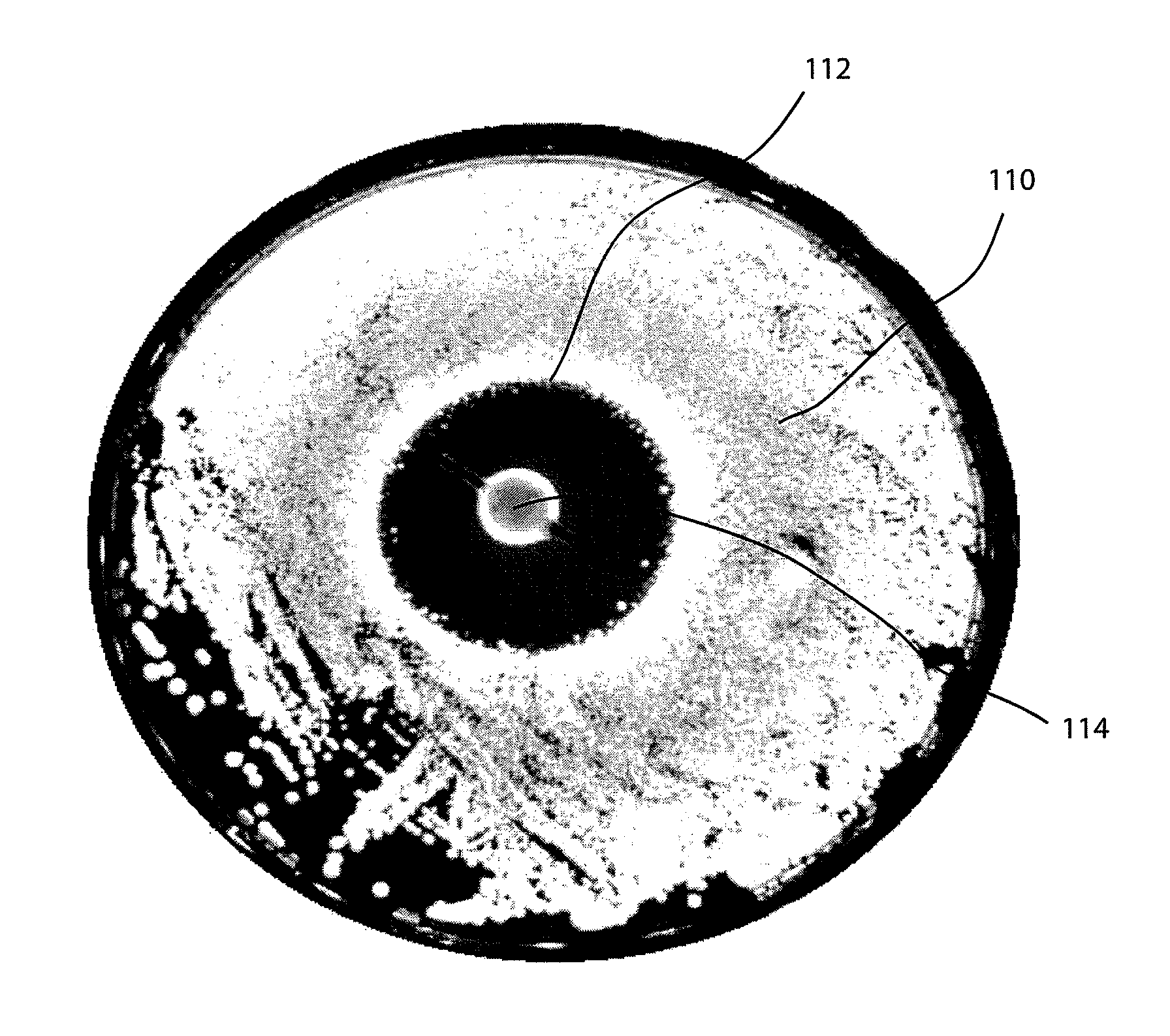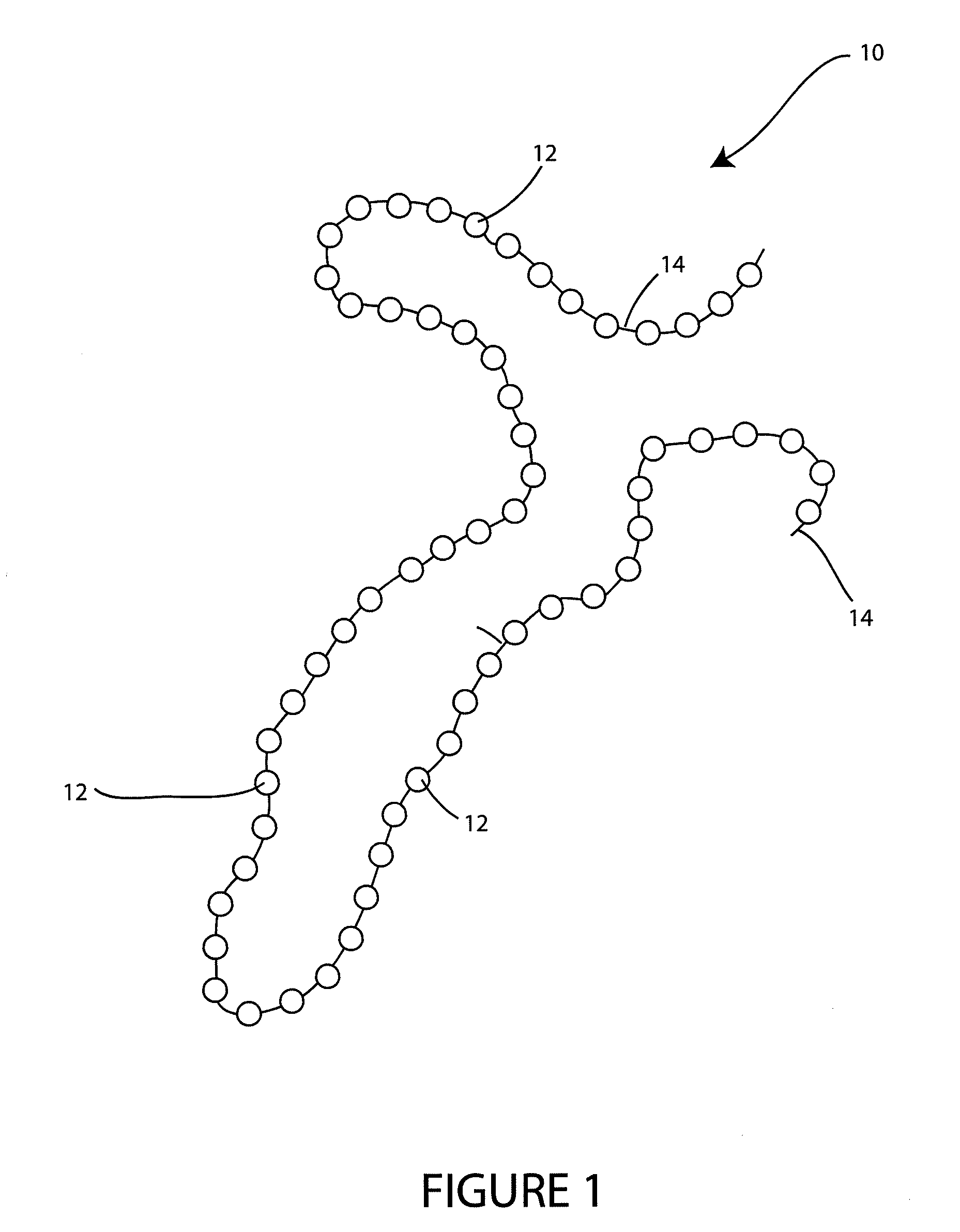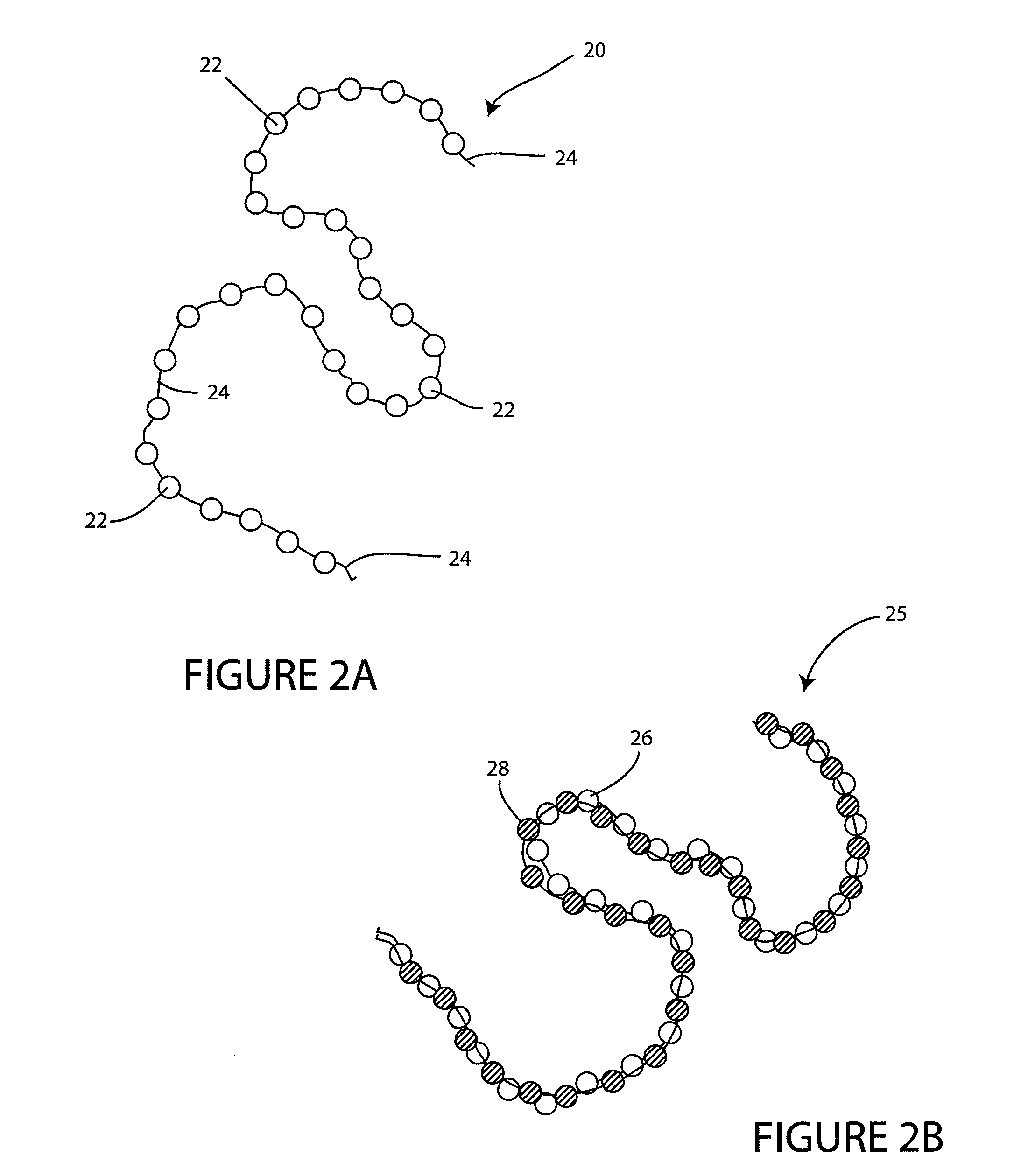Coating composition
a technology of coating and composition, applied in the direction of antibacterial agents, prosthesis, peptide/protein ingredients, etc., can solve the problem of creating a functionally closed wound that is substantially hypoxic for an extended period of time, and achieves the effect of convenient and fully removable, improved device handling, and strong bond
- Summary
- Abstract
- Description
- Claims
- Application Information
AI Technical Summary
Benefits of technology
Problems solved by technology
Method used
Image
Examples
Embodiment Construction
[0048]The present invention is directed, in part, to a temporary wound spacer device comprising multiple beads connected by non-absorbable flexible material. The device is configured for placement in a wound bed, is typically delivered from a surgical peel pack. The device is administered as an immediate yet temporary spacer to maintain the wound in an open condition while also allowing gas permeation spacing beneath any temporary occlusive wrap (i.e., gauze) placed over the device by the first medical responder. The beads and suture components of the device are easily and fully removed as an integrated unit prior to irrigation and debridement. During the medical evacuation process the device may be replaced repeatedly with a new device after wound lavage or other treatment but prior to final closure.
[0049]The device is well suited for combat injuries, including high velocity wounds, wounds with a high risk of infection, and wounds requiring delayed closure. The device is also well ...
PUM
| Property | Measurement | Unit |
|---|---|---|
| time | aaaaa | aaaaa |
| time | aaaaa | aaaaa |
| of time | aaaaa | aaaaa |
Abstract
Description
Claims
Application Information
 Login to View More
Login to View More - R&D
- Intellectual Property
- Life Sciences
- Materials
- Tech Scout
- Unparalleled Data Quality
- Higher Quality Content
- 60% Fewer Hallucinations
Browse by: Latest US Patents, China's latest patents, Technical Efficacy Thesaurus, Application Domain, Technology Topic, Popular Technical Reports.
© 2025 PatSnap. All rights reserved.Legal|Privacy policy|Modern Slavery Act Transparency Statement|Sitemap|About US| Contact US: help@patsnap.com



